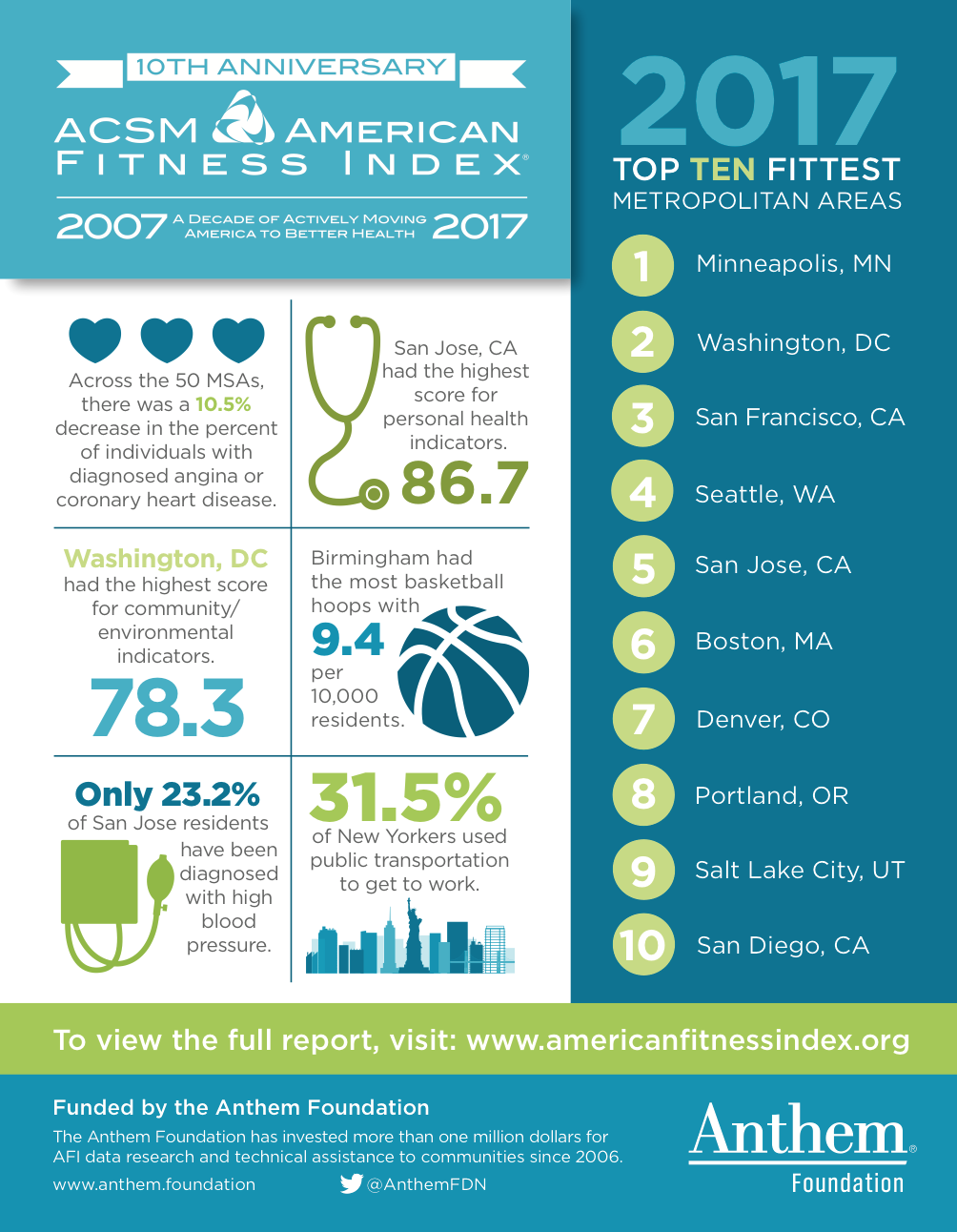Minneapolis-St. Paul now ranks as the fittest city area in America, nudging out Washington, DC, as the top spot, according to the latest annual American Fitness Index (AFI) report. Rounding out the top five fittest metropolitan areas are San Francisco-Oakland , Seattle-Tacoma and San Jose.
The rankings offer important insights into cancer prevention, with the rankings taking into account many issues related to cancer risk, such as physical activity, healthy eating and lower rates of obesity.
AICR research shows that physical activity lowers risk of several cancers; staying a healthy weight lowers risk of even more. Scientists estimate that nearly 1/3 of many common cancers in the US could be prevented if everyone were a healthy weight, engaged in physical activity at least 30 minutes every day and ate a healthy plant-based diet.
The four main categories the index measured were:
• health behaviors, including the percent of residents who were active at all in the past 30 days, exercising at least 150 minutes a week, eating at least 2 fruits and 3 vegetables a day, and current smokers
• chronic health problems, such as the percent of residents who were obese, and who were diagnosed or died from diabetes and heart disease.
• built environment, which included the amount of parkland, how many people biked or walked to work and the number of farmers markets.
• recreational facilities, the number of tennis centers, basketball courts swimming pools, dog parks and playgrounds were part of this category.
Cities that ranked near the top of the index have more resources that support healthy living, the report notes. The opposite is true for cities ranking near the bottom.
This is the 10th annual report released by the American College of Sports Medicine and the Anthem Foundation.
The Index found some positive shifts during the last year, including a 16 percent increase in those who met the recommendations for aerobic and strength activity in the last 30 days. Other good news seen happening over the last decade is that smoking rates have declined, along with the death rates for diabetes and cardiovascular diseases.
Yet as other national surveys have also found, the percent of people with obesity has increased over the years.
Data was collected through several sources of publicly available data. The largest source came from the CDC’s Behavioral Risk Factor Surveillance System (BRFSS), which uses self reports.
Want to see where your city ranks? Visit the AFI interactive report.
Here’s their infographic on the top findings.







